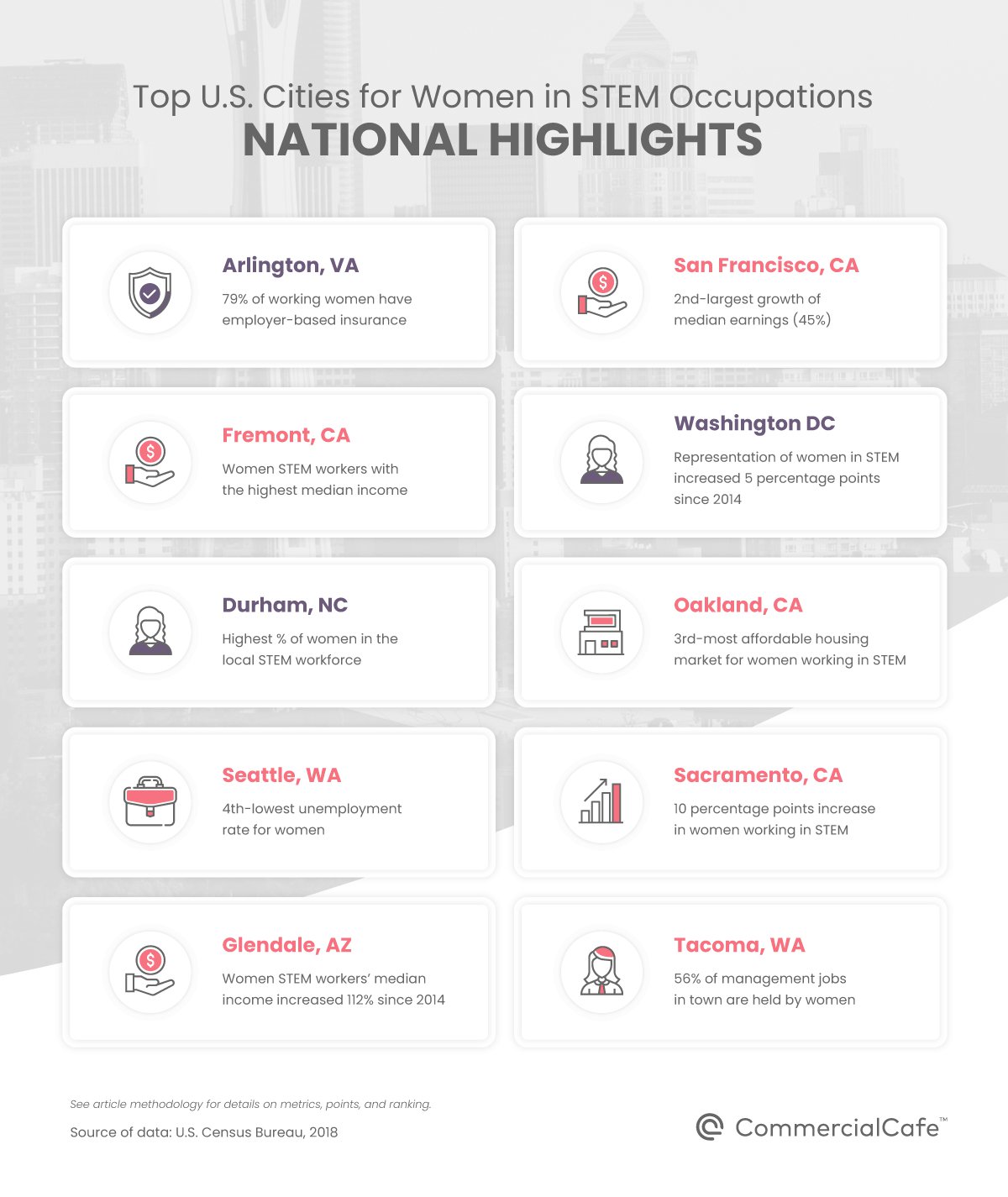According to data analyzed by the National Girls Collaborative Project, women account for roughly half of the total college-educated workforce in the U.S., yet they’re represented in only 28% of science and engineering jobs. Furthermore, within the range of STEM occupations, women tend to be more concentrated in social sciences and in agricultural, biological and environmental life sciences; here, the share of female job holders exceeds 45%. And, much like the female workforce, activity in industries pertaining to these fields is unevenly distributed across the country.
Consequently, as graduate education in STEM fields look to improve effectiveness and inclusion — and more women are inspired and supported to pursue such career paths — CommercialCafe™, a commercial real estate resource, set out to determine the current top U.S. cities for women working in STEM.
While most of the cities highlighted in this article are roughly similar in size, some are outliers by a wide margin. For instance, cities like Washington, D.C., San Francisco, New York City, Philadelphia, Houston, and Chicago are significantly larger than other cities in their respective ranking categories. Granted, larger U.S. cities attract professionals in a wide variety of industries — including STEM — to make a life there.
Meanwhile, smaller U.S. cities offer their own convincing advantages — and actually outperform large, urban areas in some respects. In reality, many of the metrics that influence decisions of where to work and live in the U.S. tend to be related to personal preferences and are, therefore, immeasurable on a wide scale. Subsequently, because our analysis did not track lifestyle factors nor factor population totals into the scores, we opted to preserve all entries.
Rather, to gauge the degree of representation of women in STEM occupations, we looked at the share of female employees out of the total number of local employees in STEM occupations as well as how that share has changed over time in each city. In order to put that metric into a comparable perspective, we also included the percentage of STEM jobs out of the total number of jobs in each city.
Moreover, in order to gauge economic incentives and estimate discretionary income, we also:
o Reviewed data on the median incomes of female STEM employees in each city;
o Compared average local rents to the female STEM workers’ median incomes; and
o Tracked the change in each city’s female STEM workers’ median earnings during the previous five years.
o The local share of women in management positions across all occupations;
o The percentage of women who have healthcare through their employer; and
o The local unemployment rate for women.
These are potential indicators of the likelihood that the local economy and business environments are inclusive of women.
Finally, of the college-educated population of each city, we also examined the share of women who hold at least a bachelor’s degree. This is a way to estimate the scale of the local, like-minded community. For more information, visit www.commercialcafe.com.





